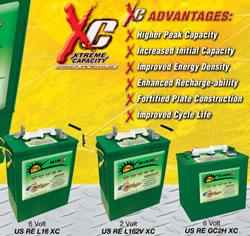The First International PV Carbon Footprint Standard: Significance, Strategies, and Eastron’s Solution
The global photovoltaic (PV) industry—responsible for 35% of new global power capacity in 2024—has long faced a critical challenge: fragmented carbon footprint standards. This created trade barriers (e.g., a "low-carbon" module certified in China might fail EU criteria) and eroded trust in carbon credits. In 2025, a transformative step was taken: the International Electrotechnical Commission (IEC) initiated the first international PV carbon footprint standard project (IEC 63667-1), focusing on PV modules. Crucially, the standard is still in development—established as a project but not yet finalized.
The global photovoltaic (PV) industry—responsible for 35% of new global power capacity in 2024—has long faced a critical challenge: fragmented carbon footprint standards. This created trade barriers (e.g., a "low-carbon" module certified in China might fail EU criteria) and eroded trust in carbon credits. In 2025, a transformative step was taken: the International Electrotechnical Commission (IEC) initiated the first international PV carbon footprint standard project (IEC 63667-1), focusing on PV modules. Crucially, the standard is still in development—established as a project but not yet finalized.
1. Significance of the IEC 63667-1 Project
The project addresses longstanding gaps in carbon accounting and drives the net-zero transition:
A. Unifying Global Methodologies
Prior to this, national standards (e.g., China's SJ/T 11926-2024, EU's EN 16258) varied widely, hindering cross-border trade. IEC 63667-1 aims to establish a global unified framework for PV module carbon footprint accounting, covering all life-cycle stages (raw materials to disposal). This will enable manufacturers to sell products with a single, credible certification—eliminating trade barriers.
B. Enhancing Carbon Credit Credibility
Carbon credits rely on accurate emissions data, but international databases (e.g., Eco-invent) often misreflect local conditions (e.g., China's coal-dominated grid). The project integrates a science-based data quality model that improves temporal and spatial matching with local data (e.g., using China's grid emission factors for modules produced in Xinjiang). This makes emissions reduction claims more trustworthy, boosting investor confidence in PV projects.
C. Driving Value-Chain Innovation
The standard mandates full life-cycle transparency, pushing companies to optimize every stage. For example: using recycled silicon (reduces production emissions by 30%) or hydro-power for manufacturing. This creates a competitive advantage for sustainable companies and reduces the industry's overall carbon footprint.
2. Eastron's SDM120CT-100mA: A Tailored Solution for PV Carbon Footprint Compliance
The Eastron SDM120CT-100mA single-phase smart meter is engineered to address the core requirements of PV carbon footprint accounting, combining precision, compliance, and adaptability for PV environments:
A. Precise Measurement: The Foundation of Carbon Footprint Calculation
Equipped with a 100mA current transformer (CT) input, the meter supports bidirectional (forward/reverse) energy measurement—accurately recording both the generation (forward) from PV systems and the consumption (reverse) from the grid. This data is critical for enterprises to calculate the carbon footprint per unit of electricity generated, ensuring reliability in sustainability reporting and carbon credit claims.
B. International Certification: Meeting Global Market Requirements
The meter holds MID certification (EU Measuring Instruments Directive), a globally recognized standard for metro-logical accuracy and credibility. For PV manufacturers, MID certification is a key prerequisite for entering the EU market—providing internationally accepted assurance that the meter's data meets rigorous metro-logical standards. This certification ensures the meter's measurements are trusted by regulators, investors, and customers worldwide.
C. Smart Communication: Enabling Efficient Data Management
Featuring an RS485 interface with Modbus/DLT645 protocols, the meter transmits real-time data to enterprise energy management systems (EMS). This enables centralized data collection, analysis, and storage—allowing enterprises to track energy usage patterns, identify high-energy-consumption processes, and optimize production techniques to reduce carbon emissions. The seamless integration with EMS streamlines carbon footprint reporting and supports data-driven sustainability decisions.
D. PV-optimized Design: Reliability in Harsh Environments
Designed for PV applications, the meter boasts a compact form factor (only 1 module width), saving space in PV station distribution boxes. It also offers excellent electromagnetic compatibility (EMC). Additionally, two pulse outputs support meter accuracy verification and control, enhancing overall system reliability.
3. Conclusion
The IEC 63667-1 project marks a pivotal step toward a standardized, sustainable PV industry. For stakeholders, preparing for the standard means investing in tools that deliver precise, compliant, and adaptable measurement—like the Eastron SDM120CT-100mA single-phase smart meter. By integrating this meter into PV systems, enterprises can not only meet the upcoming standard's requirements but also gain a competitive edge in a market increasingly driven by sustainability.
Eastron remains committed to supporting the PV industry's transition to a low-carbon future, with products designed to empower enterprises to measure, manage, and reduce their carbon footprints effectively.
Featured Product

